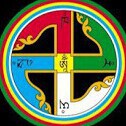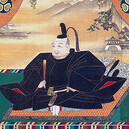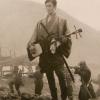-
Posts
1,895 -
Joined
-
Last visited
-
Days Won
20
Gakusee last won the day on October 26
Gakusee had the most liked content!
About Gakusee

Profile Information
-
Gender
Male
-
Location:
UK
-
Interests
Koto swords in order of personal preference: Bizen, Soshu, Yamashiro
Profile Fields
-
Name
Michael S
Gakusee's Achievements
-
This however happened well before you (and we) started eating the nihonto soup. We might regale ourselves with such tales but these treasures 99% of the time used to be found in the US, not in Europe, and also that was some good 20-40 years ago. Good ol’ days as they say. So we might try Michelin starred restaurants and what not but chances are very slim. …Mind you there is a restaurateur in London who puts samurai armour in his restaurants….But they were not acquired cheaply
-

Dai Token Ichi this weekend!
Gakusee replied to MassiveMoonHeh's topic in General Nihonto Related Discussion
The Yasutsuna is not for sale but just for display. Several dealers brought their own-collection items. -
It is true that papers and certificate etc take approximately nine months to a year but the blade itself could be out in 3-4 months (unless they choose it for the Juyo exhibition at the Nittoho, which happens in early 2026), depending on workload and numbers. But even if exhibited, one can have it before summer next year. It is an entirely different story how one will get it from point A in Japan to point B in a foreign country.
-
This above is a good point for people to always bear in mind; first and foremost the workmanship and traits should underpin our understanding, followed by the (secondary) view of the signature. In the last 20-30 years, long since the great Koza publication was written, scholarship has moved a bit in relation to the multi-generational theory and lately single-generation interpretations often prevail where previously there was a strict separation about some smiths (often the case in Bizen Osafune for example). Various examples include Mitsutada, Nagamitsu but also Kunimune etc. Moving on to how many zaimei Shintogo tachi exist. With regard to the zaimei Shintogo Kunimitsu tachi…well, there are more than one. Of course they are a great rarity but I think I have records of 5-6 such zaimei tachi. And it is very possible that Jussi might have unearthed more with his visits to shrines and temples and perusal of old records. I attach some of the examples I have records of. Of these, on a couple of occasions, I have been privileged to hold and study the last blade (TokuJu, one ana). It is an extremely fine blade, with sophisticated and fine jiba and in no way inferior to his tanto ( I have studied some in hand and various behind glass). So, I am not sure to which [inferior ibid.] tachi the Koza refers in the excerpt above.
-
That is a difficult and highly subjective discussion. It is fraught with problems such as: - what is an “artistic merit” and who judges that? - how can we isolate “artistic merit” from eg engineering and structural integrity, balance, cutting ability etc - why are we trying to assume consistent application of standards over the last 60 odd years of shinsa judgements, when in reality there were different panels with different views / weights and slightly different absolute and relative criteria? I posit that it is not possible to draw definitive conclusions over the entire period NBTHK judgements have been conferred. And that is fine. They have evolved as has the subject. For instance, I noticed that in the “problematic” 1970s, when there was some rampant Juyo issuance, a number of Juyo certificates were issued to swords made by Ichige Tokurin. See one such example below. In my view, his swords are not pretty and do not have artistic merit. The hamon is plain, the whole execution uninspiring.. Yes, he was interesting in that he was a samurai retainer who turned swordsmith. But do his swords have historic importance or artistic merit? In my humble view not really.
-
Agreed on that point and the point Jacques is making. I was just clarifying the approach taken by Fujishiro in his very limited set of predominantly famous and well-known smiths. Otherwise, yes, there are arcane smiths outside of Fujishiro with great blades. Not only outside of Fujishiro, but sometimes the setsumei would also get muddled and talk about smiths with shared names and related but different genealogies etc which are not even properly described in the various meikan.
-
Bobby i think the predominant factor for the ratings of Fujishiro is not him having seen them or not. It is more about written and oral tradition passed on to him by the previous generations. Nihonto study and ratings is all about history, tradition and what has been valued over the eras.
-
So get back on track… 1. Attached is the famous (and sublime) Awataguchi Kunimitsu JuBu. Different chisel strokes and style. 2. The DTI tanto is actually the one in the Fujishiro Koto volume. So, it must have some additional history and probably documented provenance etc but this does not mean it is not daimei by one of the students. The more I look into it the more daimei it seems.
-
Of course we agree on all of that. He has no such blades
-
Both are desirable attributions. Given that I personally prefer rarity, I would value the Awataguchi one more. But Shintogo is extremely highly rated and commercially a source of great profits for dealers. So if the TH certificate does not specify anything besides the signature, a dealer could insert their own interpretation that this is “Shintogo”. So, you either have a daimei work here or indeed you are veering towards Awataguchi / Rai. But one needs to explore “Mitsu” too as you have focused entirely on the “Kuni” above. Look at the direction of the horizontal strokes and the overall crown in “Mitsu”.
-
Many knew Guido for his acerbic wit, potent intellectual bon mot and direct, trenchant delivery. He was a man of many talents as we can see from the photos above. I would like to share a different, lyrical side to the man, larger than life. He did say he would chase any of us using his special service contacts if any of this ever surfaced but I think this is an important tribute to the great Guido. Well, I have cut the two songs he performed to a short illustrative snippet as Brian will probably not like 300MB of the entire performance on his server. IMG_3212.mov
-

2025 Dai Token Ichi Catalogue
Gakusee replied to atm's topic in Sword Shows, Events, Community News and Legislation Issues
-
If Sano are talking about Kamakura-area based (ie Sagami) smiths who dated their work, then Jussi is of course right. If it is Kamakura-period smiths, there are many dated examples and others beyond the ones I quoted above (well, many as in more than 4-5, of course not a plethora). Either way, the Sano statement, if quoted correctly, is strictly speaking a mis-statement. But Haydn, Sano Museum is a source of very good knowledge and they have a great collection. I am not too familiar with the Mokusa school and cannot comment on whether there are signed early works, which is what the discussion is about. In conclusion, Sano should have said “earliest Soshu-den smith who worked in Sagami/ Kamakura and dated his work”. But we are being pettifogging here.
-
Lewis, I would not have quoted specific dates if I were not certain






.thumb.jpg.77d8b8ceaccc15be659eed179b42bff3.jpg)
















